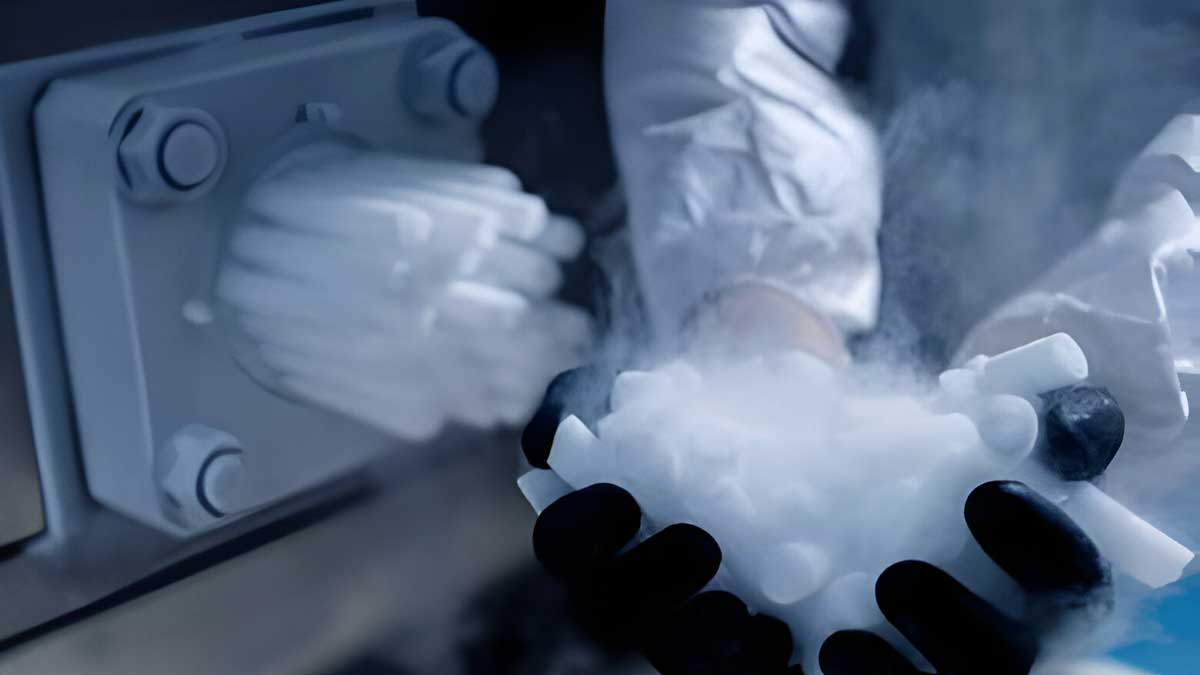
A horrifying video surfaced on social media recently in which people could be seen vomiting blood in a Laforestta Cafe in Gurugram, Haryana. As per reports, five customers were served a packet of dry ice instead of mouth freshener. All five of them were hospitalised and two are in critical condition still. The manager of the cafe has been arrested, and a case has been filed against the staff and owner.
Table of Content:-
Relaying the incident, one of the customers said that upon consuming the packet’s contents he felt a burning sensation in his mouth, and soon after was throwing up blood. Drinking water also didn’t help. While what happened in this bizarre and unfortunate case remains unknown, it does open up a conversation about what is dry ice.
Scary! Five people started throwing up blood and reported a burning sensation in their mouths after eating mouth freshener after their meal at a cafe in Gurugram
— Gargi Rawat (@GargiRawat) March 4, 2024
‘In his complaint to the police, Mr Kumar said, "I showed the packet of the mouth freshener to a doctor, who said it… pic.twitter.com/CCY9bHhLRG
What Is Dry Ice?
Dry ice, known scientifically as solid carbon dioxide, is a fascinating substance commonly used for cooling purposes in various industries, from food preservation to medical transportation. While its unique properties make it incredibly useful, it's essential to understand the potential health risks associated with handling dry ice.
Dry ice is so harmful that it should not even be handled with bare hands. According to the Appalachian State University, direct contact with dry ice can cause immediate frostbite or freeze burns on the skin. So you should always use gloves or tongs when handling dry ice.
Why You Should Never Eat Dry Ice?
While no one in their right mind will even think of consuming dry ice, there may be some intellectuals that are extra curious. Nevertheless, here are some compelling reasons why you should never consume dry ice:
Severe Frostbite
Dry ice is extremely cold, with a surface temperature of -78.5°C (-109.3°F). The intense cold can damage tissues and lead to permanent injury if not treated promptly.

Carbon Dioxide Inhalation
Dry ice sublimates, meaning it transitions directly from a solid to a gas without becoming a liquid. As it sublimates, it releases carbon dioxide gas, which can displace oxygen in the surrounding air. In poorly ventilated areas or confined spaces, inhaling high concentrations of carbon dioxide can lead to asphyxiation, dizziness, headaches, and even loss of consciousness.
Pressure Hazards
When dry ice comes into contact with moisture, such as water vapour in the air or bodily fluids, it undergoes rapid sublimation. This process releases large volumes of carbon dioxide gas, which can create a buildup of pressure. If dry ice is enclosed in a sealed container or used inappropriately, the pressure buildup can cause the container to burst, leading to potential injuries from flying debris.
Eye Irritation and Injury
Direct contact with dry ice or exposure to carbon dioxide gas can irritate and damage the eyes. The extreme cold can cause corneal frostbite, resulting in pain, redness, swelling, and temporary or permanent vision impairment. Additionally, carbon dioxide gas can displace oxygen around the eyes, leading to discomfort and potential complications.
Poisoning and Respiratory Issues
Inhaling carbon dioxide gas in high concentrations can cause respiratory distress, including shortness of breath, coughing, and chest tightness. Prolonged exposure to elevated levels of carbon dioxide can lead to more severe symptoms, such as respiratory failure, unconsciousness, and even death. This risk is especially significant in confined spaces or poorly ventilated environments.
Also Read: 300 Kidney Stones Found In Woman Who Drinks Bubble Tea Instead Of Water: Expert Shares His Opinion

While dry ice serves valuable purposes in various industries, including food preservation, shipping, and scientific research, it poses significant health risks if mishandled or used improperly. Never consume dry ice or touch it with bare hands, and always handle it with proper protective equipment, such as insulated gloves and safety goggles. Additionally, ensure adequate ventilation when working with dry ice to prevent exposure to high concentrations of carbon dioxide gas. By understanding and respecting the potential dangers of dry ice, we can mitigate the risk of accidents and prioritise safety in all applications involving this fascinating substance.
Also watch this video
How we keep this article up to date:
We work with experts and keep a close eye on the latest in health and wellness. Whenever there is a new research or helpful information, we update our articles with accurate and useful advice.
Current Version